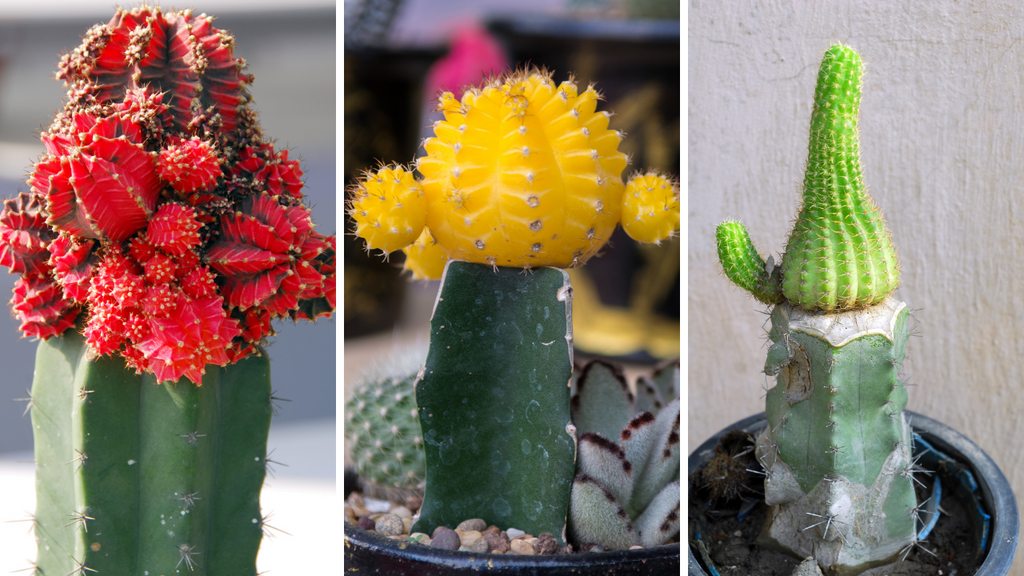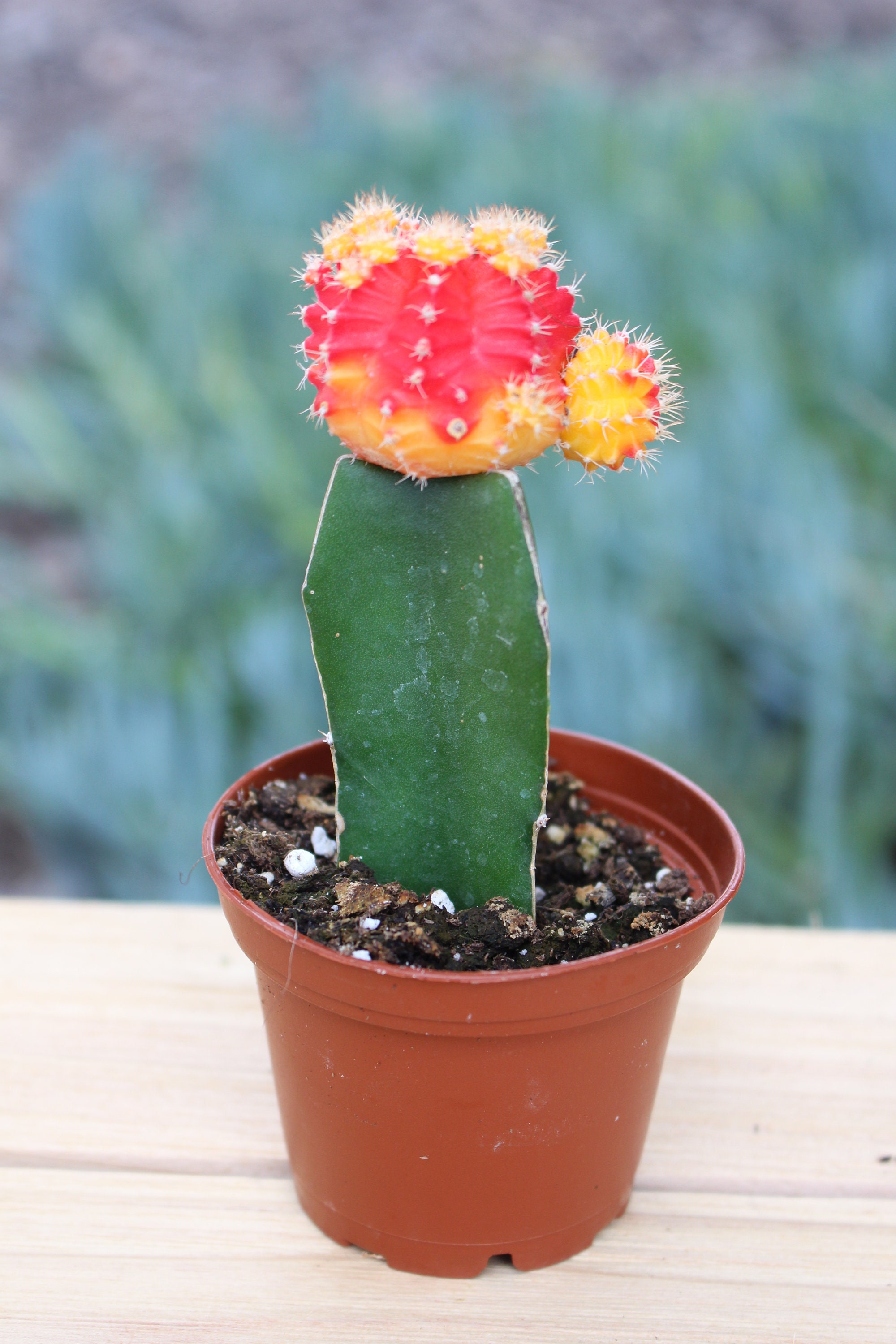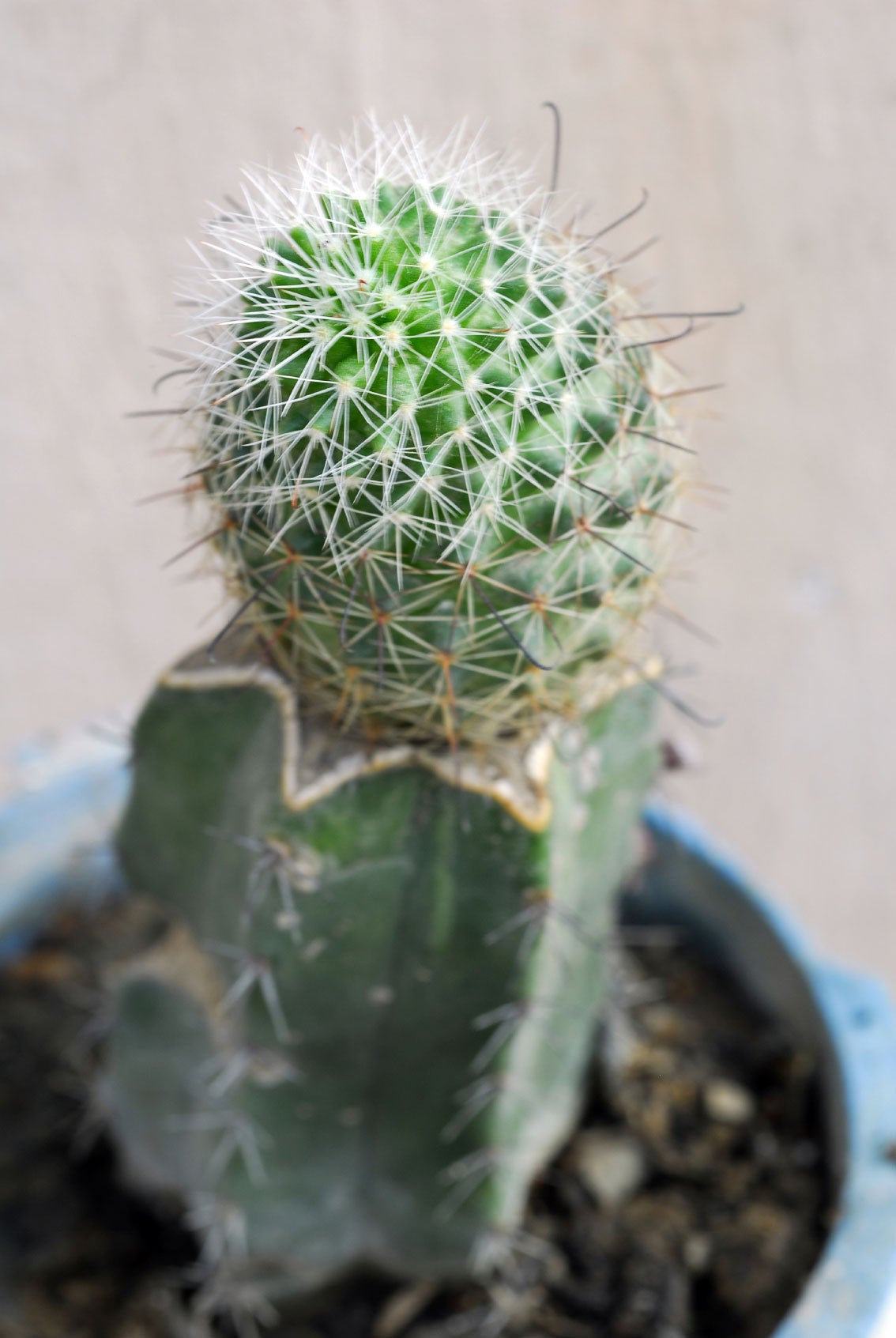The process of grafting is one that could seem intimidating, but if you can master it, you might be able to graft any cactus, not only Moon Cactus. These cacti species are robust plants that, if damaged, can regenerate a stem that is just as strong as the original. Here, I’ll explain what equipment you need, which cactus is best for this job, and how to complete the entire technique in simple steps.
Those who currently own cacti are aware of how little maintenance they need, how well-suited they are to hours of direct sunlight, how they don’t wither and die like other plants, and how resistant they are to pest infestation and disease. Let’s get to the point.
Grafting is a form of plant propagation, however it is carried out on two different plants; in the case of the moon cactus, there are two distinct varieties of cactus. Essentially what occurs One plant can’t produce food on its own, so it needs another plant to do it through photosynthesis. As you may know, chlorophyll is found in the green pigment, which is where plants absorb sunlight and produce food.
In the same way that we people eat food to gain energy and strength for walking, animals also gain energy this way in order to develop and survive. It’s also critical to understand whether they get along, can coexist, and can develop as a unit.
newly arrived, May Feel as though they are damaging the cacti by cutting them, but this is another really robust plant, so don’t be concerned. The only thing to remember before cutting is to sterilize the instrument to prevent bacterial infection, even though it may appear as though a significant section of the top has been removed.
Additionally, if you have a plant that is merely for show and with which you are not emotionally engaged, I advise against grafting it. Instead, stick with the cactus. It is always pleasant to observe a plant develop from two distinct species, and accomplishing that on your own is also a once-in-a-lifetime event.
There are a ton of grafted cacti in the markets, but you never noticed them since they blend in with one another like they were always there. These tiny, vibrant cacti appear in four various hues: red, orange, yellow, and pink. In addition, there are many other colors present within the Cactaceae family members that we were unaware of.
The moon cactus, also known as the Top or Gymnocalycium mihanovichii, lost its food-producing chlorophyll and transformed into a hue other than green. If it doesn’t have a chlorophyll-containing supporting plant, it will die as a seedling and won’t be able to grow again. A new, robust green basis is therefore required.
Interested in Buying Moon Cactus? The article’s links are at the bottom.
Specification:
| Family | Cactaceae |
| Scientific Name | Gymnocalycium mihanovichii |
| Other Names | Red Cap, Ruby Ball Cactus,Hibotan cacti and Red Hibotan |
| Native | South America |
| Plant Type | Perennial |
| USDA Hardiness Zone | 11, 12 |
| Flower Color | Red, Pink, Yellow, Orange |
| Soil | Cacti Mix & Well Drained |
| Water | Little Bit Depend on Moist |
| Light | Partial Shade |
| Fertilizer | Not Required But Used |
Additional details: Moon Cactus Care and Propagation Guide
Grafting Tools
Rubber bands or thread were used to hold the top cactus, which is positioned on the lower cactus. This keeps them from separating, and it also marks the beginning of their joining together and becoming one.
Grafting Blaze/Knife – For this task, you need a good, sharp cutting instrument that makes flawless, thin slices.
To avoid infecting our cacti, we must wipe the grafting knife with rubbing alcohol.
Gloves for Safety: Since we are working with sharp objects, neither you nor I want to risk cutting our hands on the instrument. For your own protection, Lotusmagus.com therefore suggests that you always wear gloves.
Selecting Rootstock for Moon Cactus
A cactus that is already established in the pot will have the top portion taken off in order to make room for our moon cactus. You can choose to cut it in half or simply the top. Rootstock is the term for this lowest portion.
The actual cactus’ top portion, which cannot exist without chlorophyll, has a method for producing its own sustenance. The term “scion” refers to the top stock, which is actually joined to the main green rootstock.
There are restrictions on the types of cactus species that may be utilized for grafting. This can only be done if there are two related cacti, as this increases the likelihood of successful grafting. Cacti of the same species tend to graft more successfully than other similar species, according to general observation. Additionally, individuals from the same genus can coexist and grow together. There are instances when unrelated plants will also function, although this is an uncommon occurrence. You may always conduct tests, but first you must conduct research.
Some of the cacti that can be utilized as rootstock are listed below:
Generally speaking, you can look for them using their scientific names. Hylocereus trigonus has been used most frequently for grafting, although you are free to experiment with whatever cacti you have. Always make sure the rootstock and scion you choose are healthy and clear from infections. These two are the ideal ones that work for any fresher.
It is possible to use mature rootstock because it will stay established in the pot for a longer time. If the lower part of the Scion is turning brown, it may have spoiled and should be checked again. If the lower part of the scion is brown, it can be grafted by slicing the lower, very thin layer, putting it back, and repeating the grafting technique. In such case, you can return it to the owner.
Let’s look at how to graft a moon cactus now:
How to Graft Moon cactus
These days, you can purchase this cactus online from a variety of sources. If you’re interested, the link is below.
suggested links
Amazon sells Moon Cactus.
Purchase on ETSY
I appreciate you reading.



